< Back to Climate Viticulture Newsletter
Hello, everyone!
This is the 2020 January issue of the Climate Viticulture Newsletter – a quick look at some timely climate topics relevant to winegrape growing in Arizona and New Mexico.
A Recap of December Temperature and Precipitation
Monthly average temperatures in December were within 2° Fahrenheit of the 1981-2010 average for much of Arizona and New Mexico (yellow and light green areas on map). Parts of northwestern and the eastern plains of New Mexico were the most notable exceptions to this, with temperatures in those areas 2° to 6° Fahrenheit above normal (orange areas on map). Extreme cold didn’t make any appearances during the month, so freeze damage to dormant vines wasn’t a worry. Nor were there any stretches of really warm daytime temperatures. Such equability likely worked towards meeting chilling requirements in many winegrape-growing locations.
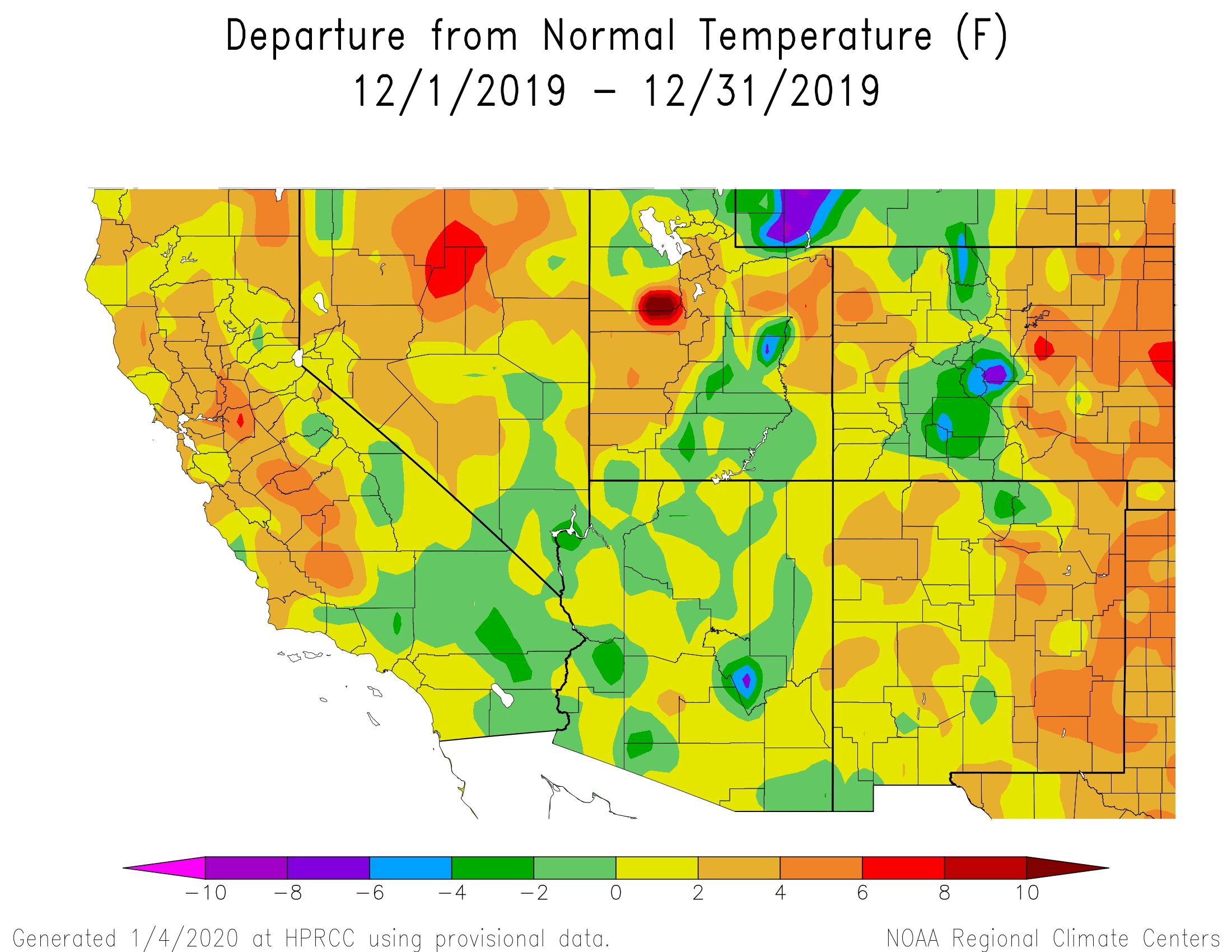
NOAA ACIS
Monthly precipitation totals were above the 1981-2010 average for most of Arizona and the northern tier of New Mexico (dark green, blue, purple, and magenta areas on map), whereas much of the rest of the latter state experienced less than 50% of normal (red areas on map). For locations benefitting from the storm track last month, the arrival of cool-season moisture that began late last year continues to increase soil moisture in vineyards.
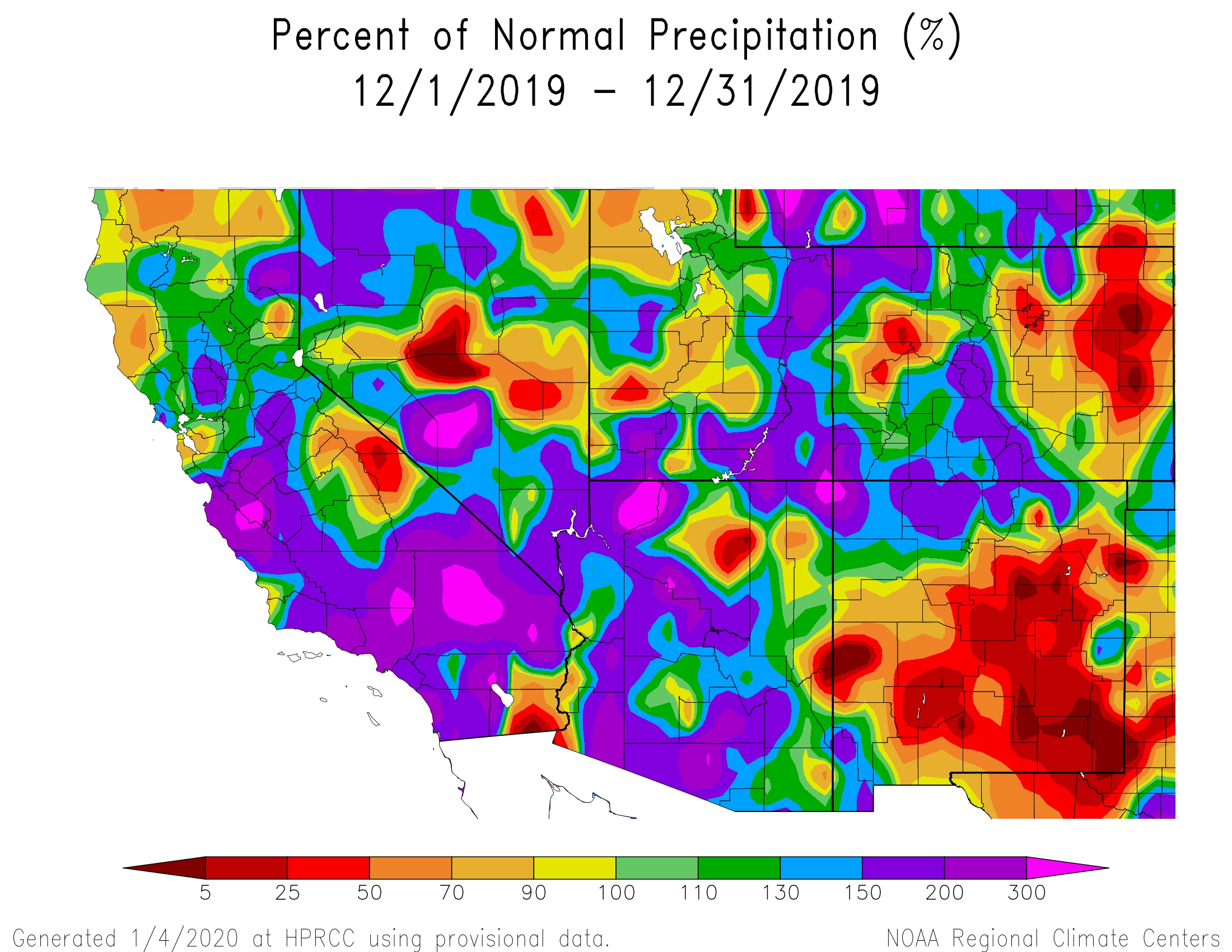
NOAA ACIS
The Outlook for January Temperature and Precipitation
There is a slight increase in chances for below-average temperatures across almost all of Arizona and the northwestern half of New Mexico (blue areas on map). Equal chances for above-, near-, or below-normal temperatures for the month exist for the rest of the region (white area on map). If they occur, cooler-than-average temperatures at this time of the year won’t help much in terms of heat unit accumulation for any vines that may already have shifted into ecodormancy. For vines still in the endodormancy state, work continues on meeting chilling requirements.
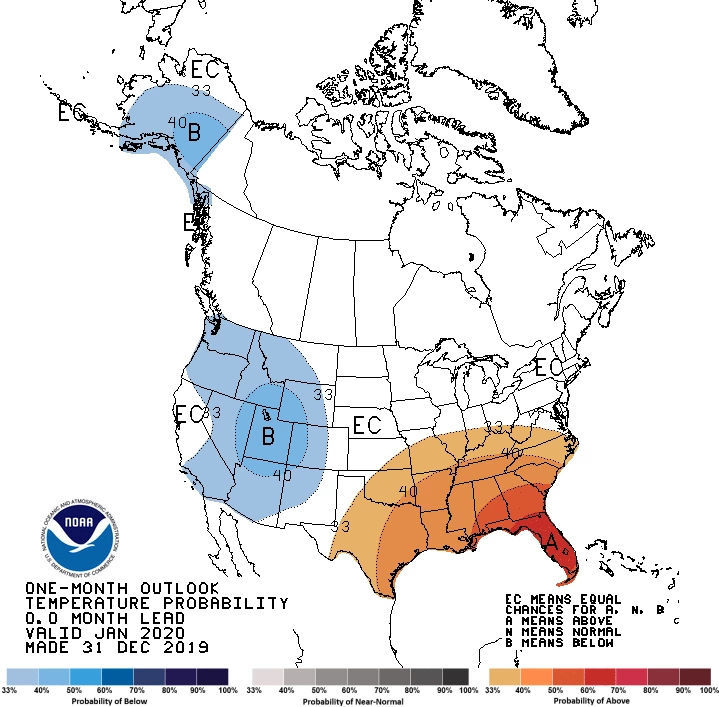
NOAA CPC
Equal chances exist for above-, near-, or below-average precipitation totals for the entire region (white area on map). Let’s hope that this three-sided coin flip comes up ‘above normal’, especially for winegrape-growing areas in the southern part of New Mexico that were relatively dry last month. Having good soil moisture levels in vineyards as we get closer to the end of winter helps guard against delayed spring growth, which manifests as uneven bud break, stunted growth, reduced flower clusters, and other issues.
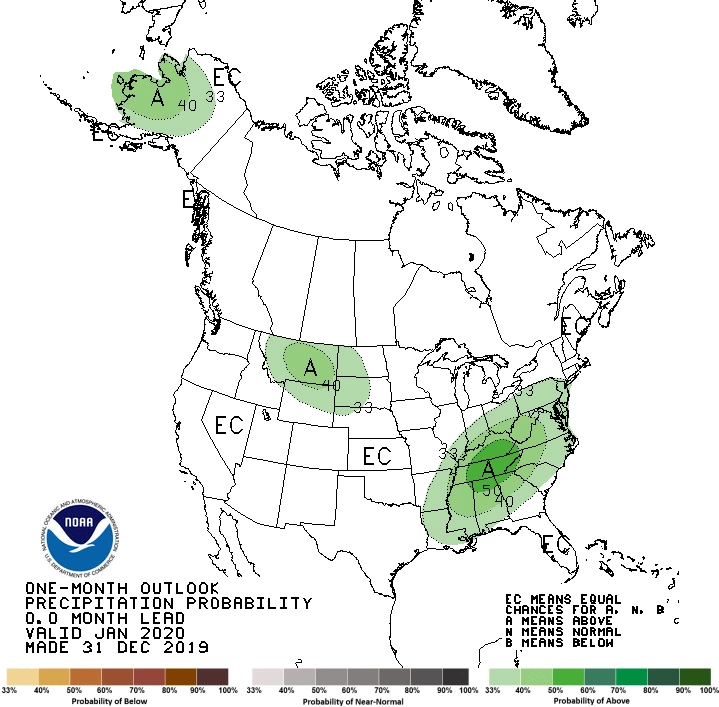
NOAA CPC
A Wrap-up on the 'Growing Season in Review' Workshops
What were the thoughts on most minds at the 2019 ‘Growing Season in Review’ Workshops for Arizona Winegrape Growers? With 184 participant comments on the growing season timelines from both the Verde Valley and southeastern Arizona versions, this could seem like a daunting question. But, nothing that a couple of new text mining and coding skills couldn’t handle.
The word cloud here highlights the main topics. The more a specific word appeared on the timelines, the bigger and bolder it appears in this word cloud. For the growing season last year, participants most often mentioned “late”, “harvest”, “august”, “april”, “may”, and “water”.
If you are wondering why participants so often noted the above terms, please dig into the workshop summary for a closer look at these and other discussion points.
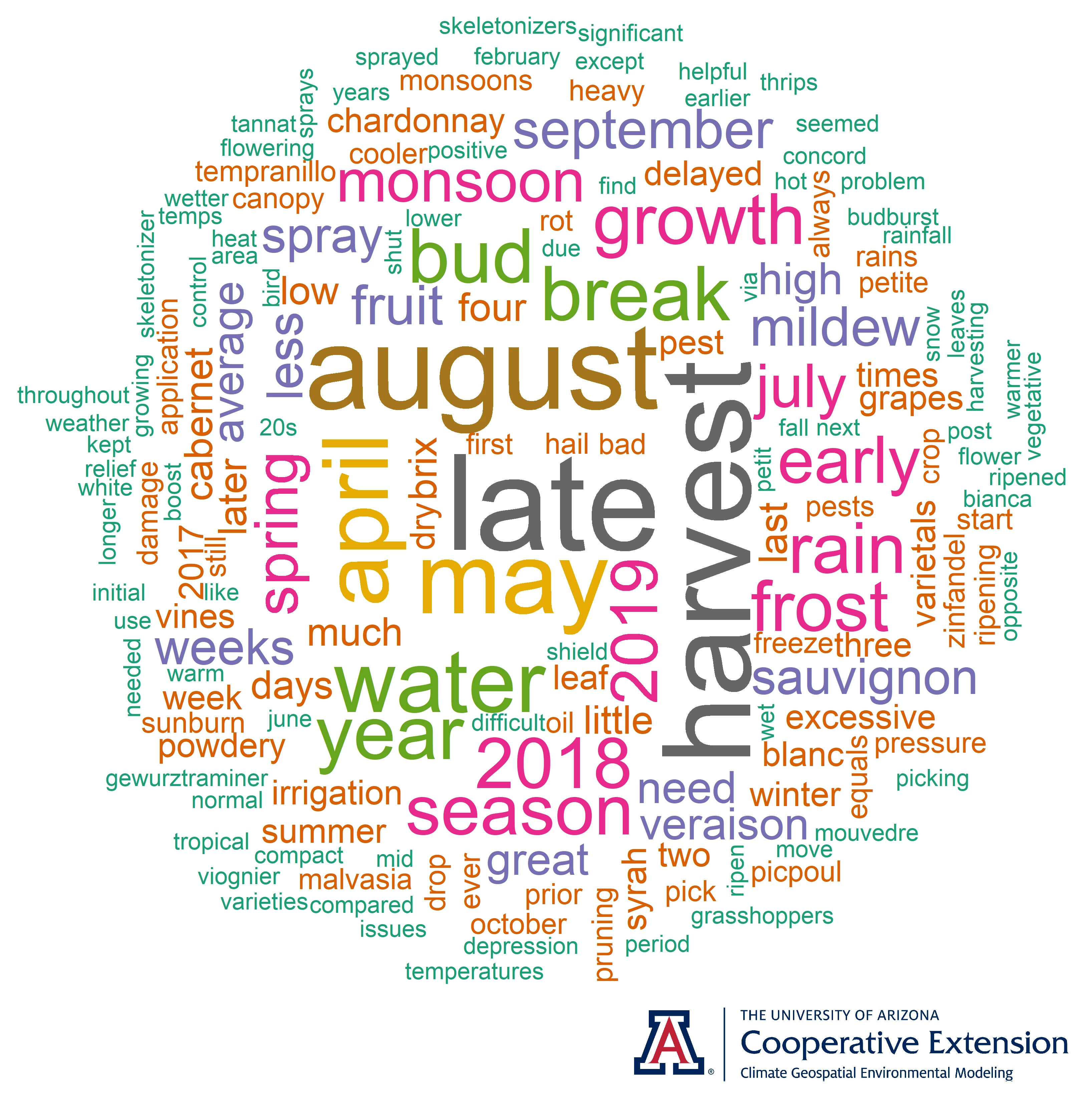
Jeremy Weiss
For those of you in southeastern Arizona, Cooperative Extension manages an email listserv in coordination with the Tucson forecast office of the National Weather Service to provide information in the days leading up to agriculturally important events, like cold-air outbreaks and beneficial winter precipitation. Please contact us if you'd like to sign up.
Please feel free to give us feedback on this issue of the Climate Viticulture Newsletter, suggestions on what to include more or less often, and ideas for new topics.
Did someone forward you this newsletter? Please contact us to subscribe.
Have a wonderful start to 2020!
With support from:




